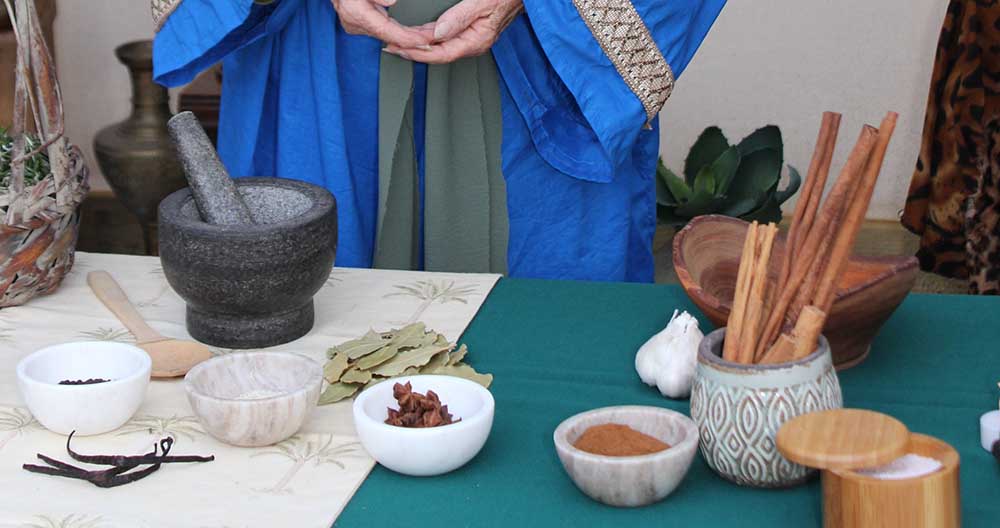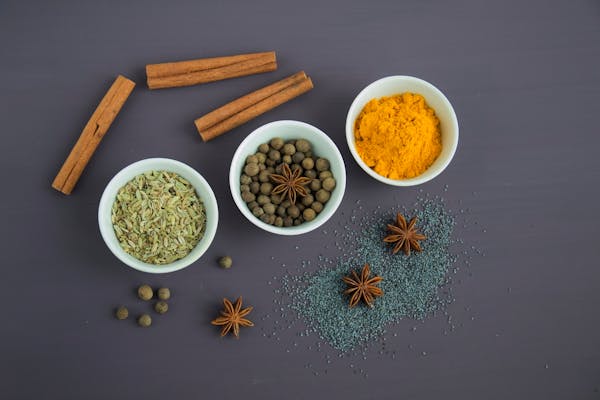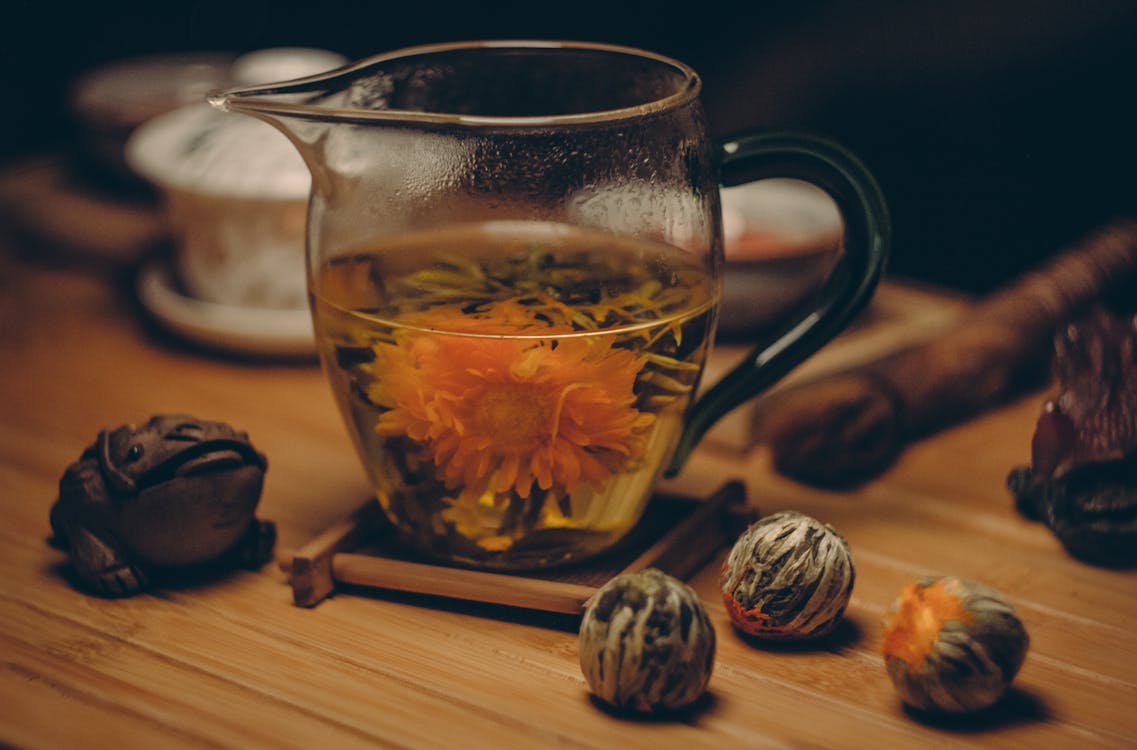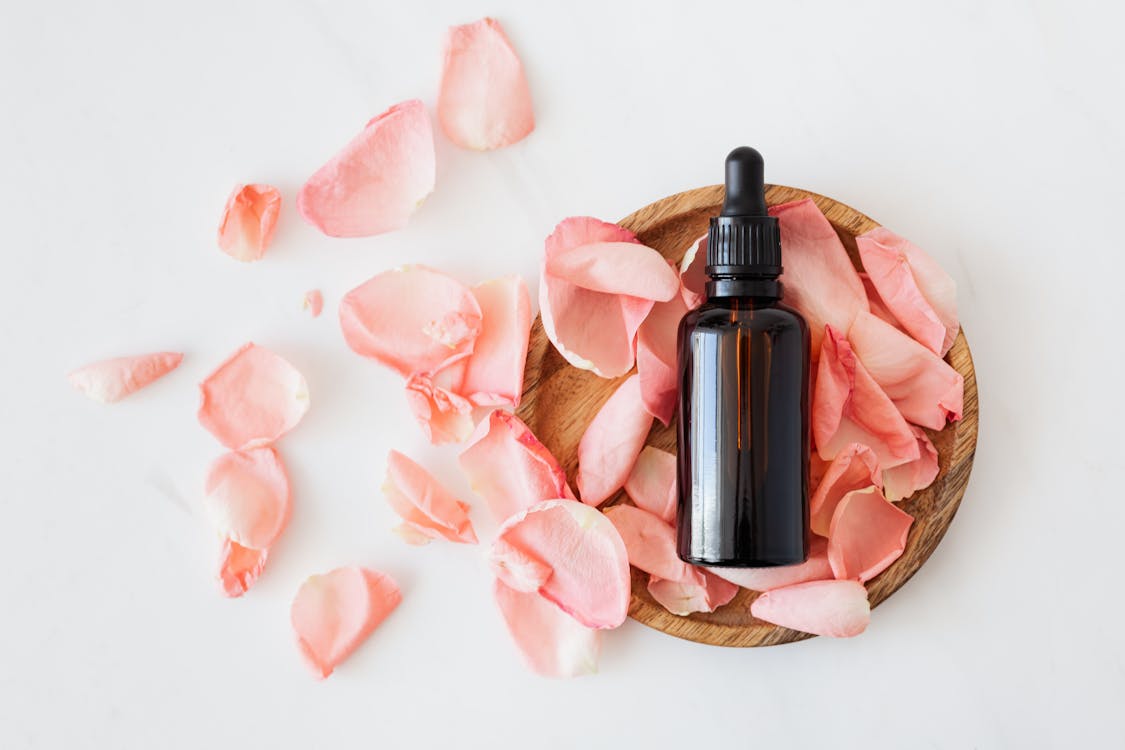
Herbal medicine, also known as herbalism or botanical medicine, refers to the use of plants and plant extracts for medicinal purposes. It is one of the oldest forms of medicine practiced by various cultures around the world.
Herbal medicine relies on the belief that plants contain natural substances that can promote healing and restore health. Different parts of plants such as leaves, flowers, stems, roots, and bark are used in various forms, including teas, tinctures, capsules, powders, and ointments. Here are some key aspects of herbal medicine.
History of Herbal Medicine

The rich and fascinating history of herbal medicine spans across millennia and encompasses a myriad of cultures and traditions. From the ancient practices of Traditional Chinese Medicine (TCM) to the holistic wisdom of Ayurveda, the indigenous healing methods of Native American medicine, and the herbal lore of European herbalism, plants have played an integral role in human well-being since time immemorial.
Venturing back through the annals of time, we find that herbal medicine was not only a cornerstone of health maintenance but also a window into the cultural beliefs and practices of ancient civilizations. The knowledge and utilization of plants for medicinal purposes were passed down from generation to generation, often enshrined in sacred texts, oral traditions, and manuscripts that offered insights into the intricate balance between humanity and nature.
Traditional Chinese Medicine, with its roots dating back thousands of years, interwove the concepts of Yin and Yang, the Five Elements, and Qi to establish a holistic approach to health. Herbal remedies were meticulously formulated to restore harmony within the body, enhance vitality, and promote longevity. Ingredients like ginseng, astragalus, and ginkgo biloba, revered for their therapeutic properties, continue to captivate modern practitioners and researchers alike.
Across the oceans, the Ayurvedic tradition of India thrived as an intricate system of holistic healing. Drawing inspiration from the interconnectedness of all life, Ayurveda classified herbs based on their tastes, energies, and effects on the body’s three doshas—Vata, Pitta, and Kapha. Herbs like turmeric, holy basil, and ashwagandha have left an indelible mark on the realm of herbal medicine, serving as cornerstones of rejuvenation and equilibrium.
In the Americas, Native American cultures cultivated an intimate relationship with the land and its resources. Plants like echinacea, sage, and yarrow were treasured for their healing properties and held sacred as conduits for spiritual connection. Herbal knowledge was often passed down through oral traditions, ensuring that generations remained attuned to the natural world and its therapeutic gifts.
Meanwhile, European herbalism flourished throughout the ages, intertwining folklore, medieval alchemy, and empirical observation. The intricate gardens of monasteries and castles were lush repositories of healing herbs, tended by monks and herbalists. From the legendary uses of St. John’s wort to the mystical allure of elderberry, European herbalism thrived as an art that bridged scientific inquiry with the wisdom of the natural world.
Interestingly, the evolution of herbal medicine didn’t occur in isolation from the development of modern pharmaceuticals. Many contemporary drugs find their origins in the pages of historical herbal tomes. As scientific understanding expanded, active compounds in plants were isolated and synthesized, giving rise to a new era of medicine. However, herbal medicine endures as a gentle yet profound approach to health and wellness, capturing the essence of cultural heritage and the connection between humans and the environment.
In conclusion, the history of herbal medicine is a tapestry woven with threads of tradition, culture, and healing wisdom. From the wisdom of ancient civilizations to the modern integration of herbal remedies, the enduring legacy of plants as healers continues to thrive. As we navigate the complexities of modern healthcare, the age-old remedies of herbal medicine remind us of the timeless bond between humanity and the natural world.
Active Ingredients

Within the intricate realm of herbal medicine, the profound influence of plants on human health is attributed to their diverse array of chemical constituents. These constituents, collectively referred to as active ingredients, encapsulate the potency and therapeutic potential that plants hold. As we delve into the intricate tapestry of botanical medicine, a mesmerizing panorama of alkaloids, flavonoids, essential oils, tannins, and an array of other compounds emerges, each contributing to the profound healing tapestry woven by nature itself.
Alkaloids, often associated with potent pharmacological effects, encompass a group of naturally occurring compounds that resonate with the intricate chemistry of life. Found in plants such as opium poppy (Papaver somniferum) and cinchona bark (Cinchona officinalis), alkaloids like morphine and quinine have been harnessed for their remarkable analgesic and antimalarial properties, respectively. These compounds exemplify the intricate interplay between plants and humans, revealing the potential for healing through nature’s chemical repertoire.
In the world of herbal medicine, flavonoids unfurl their vibrant hues and manifold therapeutic attributes. These pigments, abundant in fruits, vegetables, and herbs, contribute to the dazzling array of colors that grace our natural world. Beyond aesthetics, flavonoids possess antioxidant, anti-inflammatory, and immune-boosting properties. The esteemed ginkgo biloba and its flavonoid constituents, for instance, are revered for their role in supporting cognitive function and enhancing blood circulation—a testament to the multifaceted nature of herbal compounds.
Essential oils, exuding the enchanting aromas of plants, offer a fragrant journey into the heart of herbal healing. Distilled from aromatic plant parts, these oils encapsulate the essence of botanical vitality. Lavender (Lavandula angustifolia), renowned for its calming effects, epitomizes the soothing potential of essential oils. Meanwhile, tea tree oil (Melaleuca alternifolia) unveils its potent antimicrobial prowess, attesting to the capacity of plants to safeguard against microbial challenges.
Tannins, with their astringent qualities, lend a distinct character to certain herbal remedies. These polyphenolic compounds, found in plants like witch hazel (Hamamelis virginiana) and black tea (Camellia sinensis), have been employed for their ability to tighten tissues and alleviate various gastrointestinal discomforts. Through their gentle yet impactful actions, tannins highlight the multifaceted role of botanical constituents in promoting wellness.
Moreover, plants bestow upon us an abundant reservoir of compounds, each with its unique therapeutic resonance. Phenolic acids, saponins, terpenes, and glycosides, to name a few, all contribute to the dynamic palette of plant-derived healing agents. From the anti-inflammatory prowess of curcumin in turmeric (Curcuma longa) to the immune-modulating abilities of echinacoside in echinacea (Echinacea purpurea), the diverse repertoire of active ingredients unfolds a treasure trove of natural remedies.
The intricate symphony of active ingredients underscores the individuality of each plant species and its intricate connection to human health. Indeed, different plants bear distinctive chemical signatures, heralding a myriad of therapeutic uses. This remarkable diversity empowers practitioners of herbal medicine to craft personalized interventions that honor the unique constitution of each individual.
In conclusion, the captivating world of active ingredients within plants invites us to explore the interplay between nature’s chemistry and human well-being. As we immerse ourselves in the boundless wonders of alkaloids, flavonoids, essential oils, tannins, and a plethora of other compounds, we bear witness to the exquisite dance of healing energies that transpires within the heart of botanical medicine. Through the ages, these compounds have guided healers and seekers alike, unveiling the timeless synergy between the botanical world and the pursuit of holistic health.
Holistic Approach

Nestled within the heart of herbal medicine lies a profound philosophy that transcends the boundaries of mere symptom relief, venturing instead into the realm of holistic well-being. This approach, characterized by its embrace of the whole person, signifies a departure from the reductionist tendencies of conventional medicine. As we embark on a journey through the corridors of holistic healing, we uncover a tapestry woven from interconnected threads—threads that recognize the interplay between body, mind, spirit, and environment.
Herbal medicine, with its roots deeply entwined in the wisdom of ancient cultures, has long been a torchbearer of holistic healing. Rather than isolating symptoms or ailments, this approach illuminates the interconnectedness of all aspects of human existence. It beckons us to acknowledge that health is not solely confined to the physical vessel, but encompasses the intricate dance between emotional well-being, mental equilibrium, and spiritual alignment.
At its core, the holistic approach seeks not only to alleviate symptoms but to penetrate to the heart of the matter—to unearth the underlying causes of imbalance that give rise to illness. It does not merely suppress a cough or quell a fever; it endeavors to identify the subtle disharmonies that may have ignited these expressions of distress. By addressing these root causes, herbal medicine seeks to restore harmony within the body’s intricate ecosystem, creating a fertile ground for healing to flourish.
One of the hallmarks of holistic herbalism is its recognition of the body’s innate wisdom and capacity for self-healing. It views the body as a dynamic and self-regulating system, capable of rebalancing itself when provided with the necessary support. This philosophy underscores the importance of facilitating rather than dictating the body’s healing process. Rather than imposing external interventions, herbal medicine offers nourishment, guidance, and gentle encouragement, trusting that the body’s inherent intelligence will navigate the path to wellness.
A testament to the holistic perspective is the art of constitutional herbalism, which tailors herbal protocols to an individual’s unique constitution, temperament, and life circumstances. This personalized approach acknowledges that each person is a microcosm, influenced by genetics, environment, experiences, and emotions. As such, the same ailment may manifest differently in two individuals, necessitating a nuanced approach that respects the individual’s holistic tapestry.
Furthermore, the holistic philosophy recognizes the profound impact of the mind and emotions on overall health. It acknowledges the mind-body connection, wherein emotional states can exert tangible effects on physiological functioning. Thus, herbal medicine seeks not only to soothe physical symptoms but also to nurture emotional well-being. Herbs like chamomile and passionflower, celebrated for their calming properties, offer solace not only to the body but also to the restless mind.
The holistic approach extends its embrace to encompass the broader environment in which an individual exists. It acknowledges that the quality of our relationships, the harmony of our living spaces, and the vitality of our connection to nature are integral aspects of our well-being. Just as a garden flourishes when nurtured by fertile soil, sunlight, and water, so too does the human experience flourish when immersed in a nurturing and supportive environment.
In conclusion, the holistic approach within herbal medicine beckons us to journey beyond the confines of symptom-centric thinking and embark on a voyage that celebrates the intricate interplay of body, mind, spirit, and environment. Through its wisdom, we are reminded that health is not a mere absence of illness but a harmonious dance of interconnected elements. This approach invites us to cultivate awareness, engage in self-care, and foster a profound synergy between our intrinsic essence and the vibrant tapestry of life that surrounds us.
Traditional Knowledge and Modern Research

Enveloped within the annals of time, traditional herbal medicine stands as a repository of ancestral wisdom—a tapestry woven from the threads of generations past. This lineage of healing, nurtured by the hands of healers, shamans, and wise folk, has been forged through empirical observations and the intimate dance between humans and the botanical world. As we embark on a voyage through the corridors of tradition, we unearth a treasure trove of knowledge that has been distilled through the ages, shaping the foundations of holistic wellness.
The essence of traditional herbal medicine lies in its innate connection to cultural heritage and indigenous wisdom. Across continents and civilizations, from the intricate tapestry of Traditional Chinese Medicine (TCM) to the ancient wisdom of Ayurveda, from Native American healing traditions to the tapestries of European herbalism, the sacred bond between humans and the plant kingdom has been revered and celebrated. Passed down as a sacred legacy from one generation to the next, this knowledge draws its vitality from the symbiotic relationship between humans and nature—a relationship characterized by observation, intuition, and an intimate understanding of the rhythms of the natural world.
Yet, as the currents of time continue their inexorable flow, a new chapter unfolds in the saga of herbal medicine—a chapter marked by the convergence of ancient wisdom and modern scientific inquiry. In recent years, a burgeoning interest in herbal medicine within scientific circles has set the stage for a harmonious interplay between tradition and innovation. With a focus on understanding the intricate mechanics of herbal remedies, research has embarked on a journey to peel back the layers of botanical secrets, revealing the active compounds that infuse plants with their therapeutic potential.
As laboratories hum with curiosity and cutting-edge technology, the spotlight shines on identifying and isolating the active compounds within botanical treasures. These compounds, often the guardians of a plant’s healing prowess, emerge as the linchpins that bridge tradition and scientific validation. From alkaloids to polyphenols, terpenes to glycosides, each compound unfolds its unique story—a narrative that reveals how it interfaces with human physiology, triggering intricate biochemical responses that resonate with healing.
Scientific inquiry delves deeper, unraveling the intricate mechanisms through which these active compounds interact with the human body. These investigations illuminate the pathways through which botanical interventions initiate cellular responses, modulate enzymes, and influence biochemical cascades. With each discovery, the divide between traditional knowledge and modern understanding narrows, fostering a dynamic dialogue that enriches both realms.
Moreover, the rigor of scientific exploration extends to evaluating the efficacy and safety of herbal remedies. Clinical trials, experimental studies, and systematic reviews converge to assess the therapeutic potential of herbal interventions. Through these investigations, traditional herbal wisdom is validated and refined, creating a symbiotic relationship between empirical knowledge and evidence-based medicine. This partnership between tradition and research not only enriches our understanding but also offers a bridge that allows herbal medicine to seamlessly integrate with contemporary healthcare paradigms.
In conclusion, the narrative of traditional herbal medicine evolves in the embrace of modern research, forging an alliance that transcends time and perspective. As scientific inquiry peels back the layers of botanical mysteries, it does not diminish the sacred tapestry of tradition; rather, it illuminates it with newfound clarity. This harmony between ancestral wisdom and modern understanding fosters a rich dialogue—one that deepens our appreciation for the intricate dance between humans and plants, while unveiling the remarkable potential of herbal medicine to enrich our lives and foster holistic well-being.
Common Uses

Woven into the fabric of humanity’s healing journey, herbal medicine unfolds as a versatile and intricate tapestry, offering an array of remedies that span across the vast spectrum of human health. With its roots reaching deep into the annals of history, herbal medicine has emerged as a beacon of hope, offering a holistic approach to an array of health conditions that resonate with the essence of our existence. From the embrace of digestive harmony to the soothing balm for weary souls, from the fortification of immunity to the gentle touch that guides us through the labyrinth of stress, herbal medicine stands as a testament to nature’s profound ability to heal and nurture.
The canvas upon which herbal medicine paints its vibrant hues is as diverse as the myriad of health conditions it seeks to address. Among its multifaceted applications, one finds solace in its efficacy in navigating the realm of digestive disorders. A comforting cup of peppermint tea, for instance, may bring respite to those grappling with indigestion, bloating, and discomfort. Ginger, revered for centuries, dances with the symphony of our senses, offering a soothing embrace to quell the unruly waves of nausea that may threaten to disrupt our equilibrium.
As the breath of life intertwines with the rhythm of the seasons, herbal medicine extends its hand to harmonize the symphony of respiratory wellness. Eucalyptus, with its invigorating aroma, unfurls its essence to alleviate congestion and ease the journey of each breath. Meanwhile, thyme, infused with its potent antimicrobial properties, becomes a trusted ally in fortifying the respiratory passages against the challenges that may arise.
With the canvas of our skin as its canvas, herbal medicine unveils its artistry in addressing an array of dermatological concerns. Calendula, revered for its soothing embrace, extends its petals to nourish and heal irritated skin, while lavender, with its delicate aroma, weaves tranquility into the fabric of stressed complexions. The vibrant tapestry of herbal medicine resonates with each skin type, weaving a personalized symphony of healing that acknowledges the unique needs of every individual.
Delving into the realm of hormonal balance, herbal medicine offers a harmonious dance with nature’s rhythm. Vitex, a beloved ally in women’s health, extends its gentle touch to support menstrual regularity and hormonal equilibrium. Meanwhile, saw palmetto, with its nurturing essence, may lend a hand in promoting prostate health in men. These botanical allies, in their essence, echo the wisdom of nature’s intricate cycles, inviting balance and harmony into the complex realm of hormones.
The symphony of immunity finds its crescendo within the realm of herbal medicine, as echinacea unfurls its vibrant petals to bolster the body’s defenses against external challenges. A time-honored companion in winter’s embrace, echinacea resonates with the vitality of the sun’s warmth, weaving a protective cloak that nurtures the body’s resilience.
In a world brimming with stimuli and demands, herbal medicine extends its hand as a guide through the labyrinth of stress. Chamomile, with its gentle whispers, beckons us to imbibe serenity in every sip, while passionflower unfurls its tendrils to cradle us in a restful embrace. As life’s currents ebb and flow, these botanical companions provide a sanctuary—a refuge where tranquility and balance reign supreme.
In the realm of cognitive function, ginkgo biloba takes center stage, weaving a tapestry that resonates with the complexity of the human mind. Like ancient whispers carried by the wind, ginkgo’s leaves unfold their potential to support cognitive vitality, inviting a harmony that reverberates through memory and focus.
In summation, the panorama of herbal medicine’s common uses unfolds as a rich tableau—an intricate mosaic woven from nature’s bounty. From digestive harmony to emotional well-being, from immune fortification to cognitive support, each botanical ally adds its unique hue to the vibrant spectrum of holistic wellness. Rooted in tradition and validated by modern research, these remedies stand as a testament to the profound synergy between humans and the natural world—a synergy that celebrates the innate capacity of nature to nourish, heal, and rejuvenate.
Safety and Precautions
While herbal medicine is generally considered safe, it is important to use it responsibly. Some herbs can interact with medications, cause allergic reactions, or have toxic effects if used improperly. It is advisable to consult with a qualified healthcare professional or a trained herbalist before using herbal remedies, especially if you have any pre-existing health conditions or are taking medications.
It’s worth noting that herbal medicine is a complementary and alternative approach to healthcare, and it should not replace proper medical diagnosis and treatment. Integrating herbal remedies into your healthcare routine should be done with care and under the guidance of a knowledgeable practitioner.
Book: Encyclopedia of Herbal Medicine




